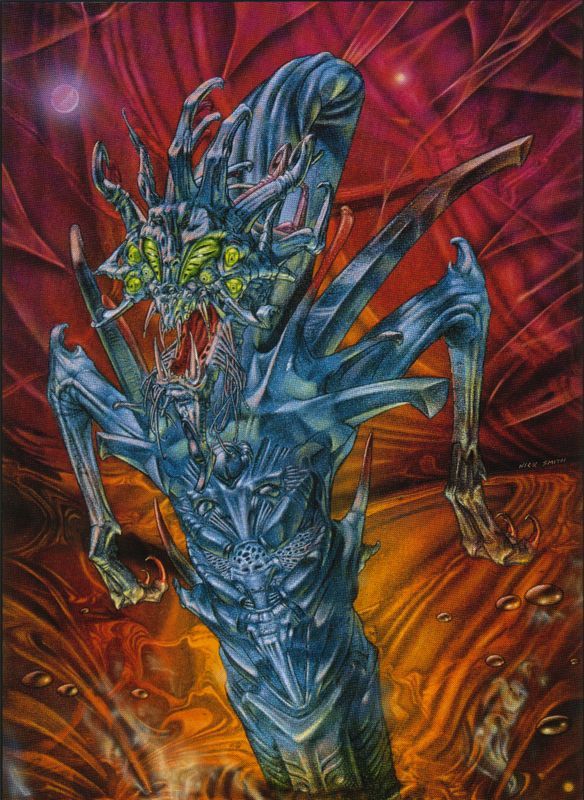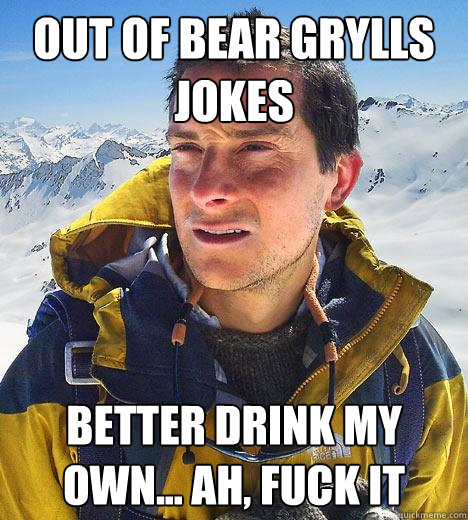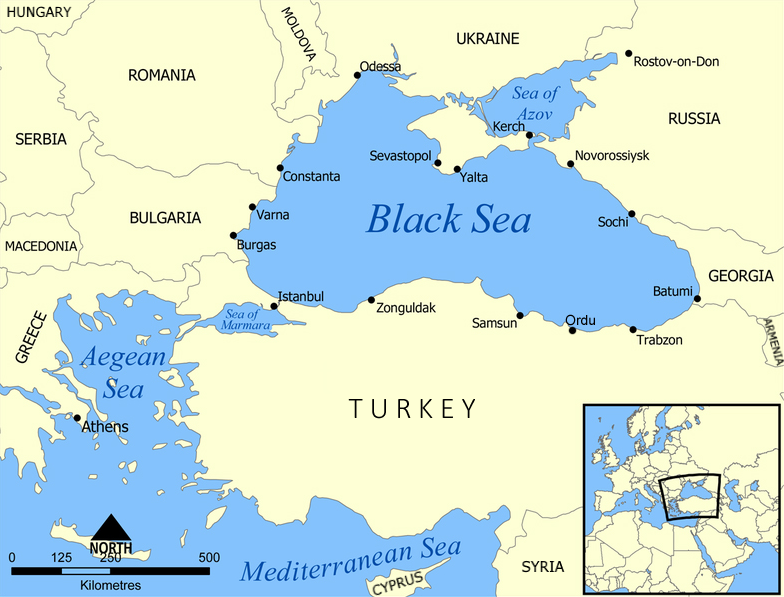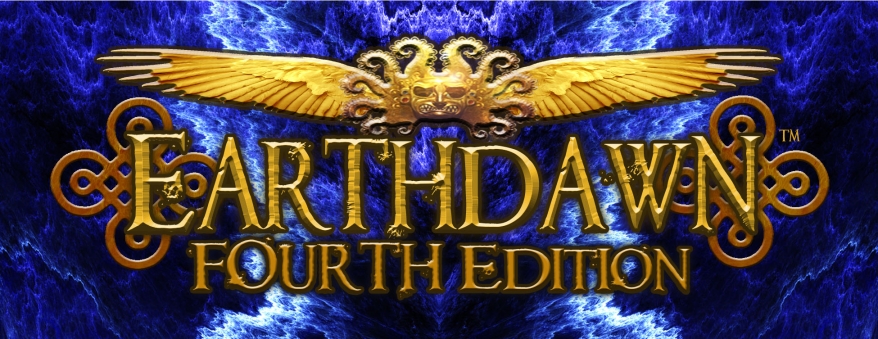The jungle crawled with horrific creatures of both this world and others...
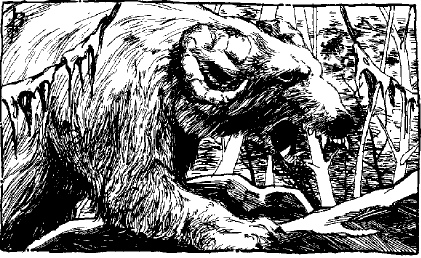
They can't all be winners.
Clocking in at 28 pages, this is one of the longer chapters in the book. It is also massively, tragically, ridiculously too short. See, in an old-school fantasy game (which Earthdawn definitely is) you basically fight monsters, explore places, and stagger home under the weight of loot. The monsters are about as important as the player characters, maybe more. Certainly, Gygax brought out the Monster Manual before the Player's Handbook, and AD&D didn't appear to suffer for it. An old-school fantasy RPG could seriously just have a creature section that is over three hundred pages long. That wouldn't be weird. 28 pages, thus, is an extremely ambitious attempt at extreme brevity.
I could imagine a monster section this short working for a game like this, after all you are presumably going to presumably make at least one expansion book just for monsters at some point.

Yup.
But if you were to have this work, you'd have to really focus on the low level threats. There are twenty two regular monsters in this chapter. In addition, there are three sample NPCs (an elite guard, a cave dwelling troll, and an ork raider), and a list of abbreviated stat lines for a pile of normal animals. And it spends a couple pages ranting about Dragons and Horrors, both of which are far higher level than this book goes, and arguably higher level than the fucking game goes. And there aren't enough monsters to get you through to 8th Circle in this book. What monsters exist aren't even biased towards the low end. You're going to end up fighting a lot of Ghouls. Like, really a lot of Ghouls.
These aren't Shadowrun ghouls, either, since all undead are pretty much the result of Nethermancy or Horrors (or, sometimes, Horrors using Nethermancy). I'd like to say that subsequent books addressed the issue, but aside from the strange and hilarious Creatures of Barsaive (where the narrator has to be continually reminded that the readers are not dragons and, perforce, cannot do much with the advice to "swoop down from behind and flame it to death") this mostly chalks up to many books have small creature sections stuck in the back, and most of those are Horrors of some description. So, you're fighting a lot of undead and Horrors is what I'm getting at.
That said, because this isn't a Shadowrun book that has to at least pay lip service to modern science and biology, the "normal" critters in this book go from bear-with-horns to alien critters the likes of which the world has never seen - but it's all D&D rip-offish fun.

Earthdawn also has flying magical lizards that are not dragons. Also, dragons.
That said, there's call-outs to a lot of Shadowrun conceptions. Dragons are pretty much identical, albeit with some extra powers that SR dragons wouldn't inherit until later editions when the ED material was fresh in the minds of a new generation of freelancers.
The first part of the Creatures chapter tells us how to read a Creature entry. So on page 286 they do indeed tell us that a creature entry gives stats in terms of die steps rather than literal numbers. Which is good to know. And would have been even better to know back when they dropped the first creature writeup in a spell effect on page 161.

Most writers for Earthdawn treated the Scourge as a microevolution event. Critters that couldn't cut the mustard died horribly and didn't leave offspring, the ones that did survive were mean and adapted quickly. Which is why "Cave Trolls" are treated as magical creatures that use crude elemental magic rather than actual Namegivers with disciplines. Likewise, most of the creatures given here have to have some stated excuse for how they survived the Scourge, usually by being appropriately sneaky/badass.

In addition to the hit-or-miss black and white artwork, there's some gorgeous full color plates in this section. This is Verjigorm, the Hunter of Great Dragons. He's pretty much the biggest badass Horror in the setting, and later books suggest he created all the Horrors and maybe dragons too. He's worth a cool 2 million Legend Points if you can kill him. It's like stalking a tarrasque that's also an archmage.
Monsters have no real indication in them as to what circle of characters they are intended to be opposition for. You can sort of work it out backwards in that each monster is worth a number of “legend points,” so you can figure that you probably shouldn't be fighting monsters that are individually supposed to be worth more XP than you get in the entire session. But um... that's about all the guidance that Mister Kaer gets. There are a grand total of six creatures that aren't mundane animals that are worth less than 100 Legend Points and are thus consistent with a 1st circle XP parcel. If we don't count the Ork Raider, there are only five monsters available. There are Dragons and Horrors that are worth tens of thousands of XP, just to rub it in though.
It's the "we're aping D&D a little too closely" thing over and over again. One thing you do get that's good is that the Horrors section is front-loaded with a bunch of powers, and individual Horrors are assigned these Horror powers are different steps - which makes the entries shorter and easier to make your own Horrors, though LP values are up in the air.
As for the Horrors themselves...well, there's no universal rule on how common they are, no real connection in their appearance or abilities. Individually they range from bacteria (the Dread Iota, in a different book) to dragon slayers. Some of them look like aberrations, others are former Namegivers twisted into an approximation of monstrous spiders (okay, those are technically "Horror constructs," but you get the idea).
Typical Horror powers include Damage Shift (they move damage they've taken onto other characters), Horror Mark (ability to mark characters and affect them from a distance), Karma Tap (give characters a Karma bonus if they do actions telepathically suggested by the Horror), Skin Shift (literally, your skin detaches and moves around, it's painful), spellcasting, instilling terror, raising the dead...
A lot of the Horrors are formidable enough in a stand-up, knock-down fight, but for the most part you encounter them indirectly at first, because they more intelligent (and dangerous) ones like to corrupt Namegivers from behind the scenes, driving their targets to madness and causing them to betray, mutilate, and kill themselves and others, savoring the pain and death - some Horrors have more specific feeding habits than others, but you can well imagine the scenario of starting out the game trapped in a kaer, a random murder occurs, the gates are sealed and suddenly you're in a locked-house horror movie and the serial killer probably isn't just human...
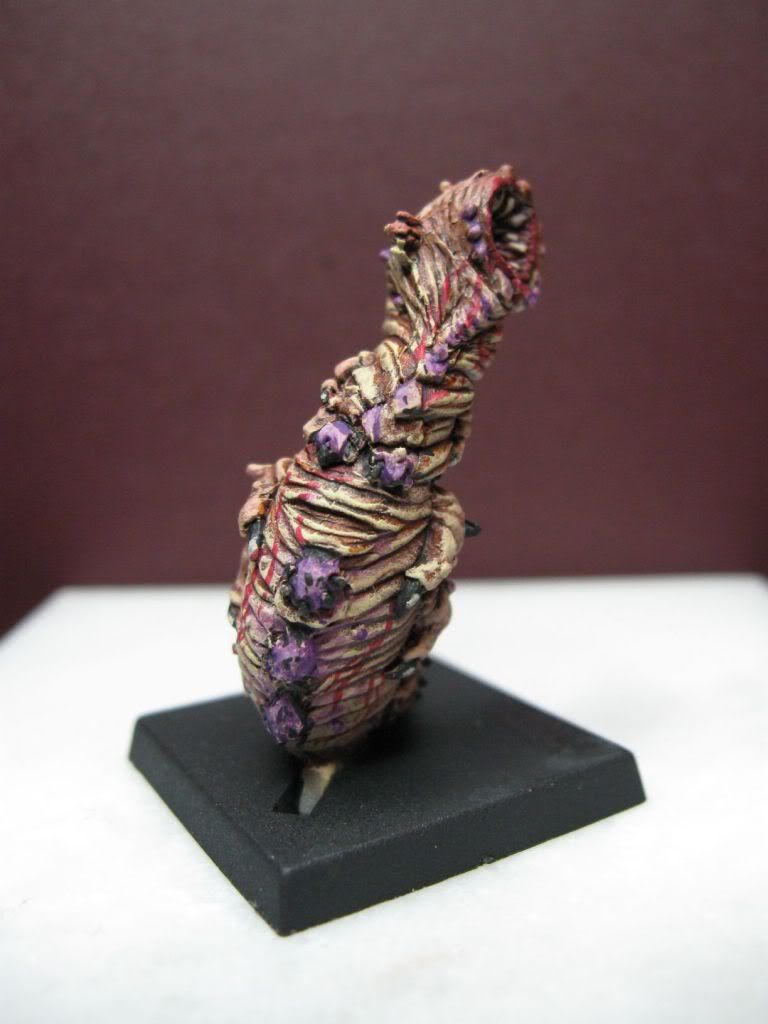
This is the only photo I can find of a despairthought, a relatively common mid-Circle Horror that looks like a giant larva. It targets children, and tries to convince them to do things that result in their family and loved ones getting Horror-marked, and often renders their victim suicidal. That's all in the stats, by the way:
Also, once per year the Horror can attempt to force the victim to commit suicide. In this case, the Horror and the victim each make three sets of Willpower Tests against each other's Willpower step, and compare the results of the tests. If the Horror's results exceed the victim's for each of the three tests, the victim commits suicide within 24 hours. The Horror usually does not invoke this power for at least a full year after invading the victim, preferring to wallow in the pain it can cause the victim during that time.
As we mentioned in the Combat section, this is pretty much the section that actually tells you how good you are. The difficulty of your attacks are the physical defenses of the monsters you face. And so we sort of have some levels of opposition. There are monsters that you might fight as a starting character (generally difficulty 7 or less), monsters tougher than that (difficulty 8-10), really tough monsters (difficulty 12), and then frickin insane things (difficulty 20 and more).
You can kind of put together an idea of what a monster in a bracket is supposed to look like. But only kind of. There just aren't enough data points to make any firm pronouncements.

Again, it's old school. You're not supposed to look for "level appropriate challenges" and fight until you drop. You need to learn the wisdom of when the fuck to run away, and when to run away very fast.
That said, there's not many out-and-out closet trolls, except for Cadaver Men, which are reanimated dead people that look like zombies but fly into a rage when Wounded and make 4 fucking attacks a round, which at low levels means they will tear your shit up. There's also several monsters that, uh...well, I don't want to say disappear, but don't fit the aesthetic that Earthdawn developed and are basically never fucking referred to again anywhere, like Triplicants ( a weird, slender critter that summons duplicates of itself).
Next up: The Passions of Barsaive (not porn, I promise! Maybe some titties, if you're good.)
